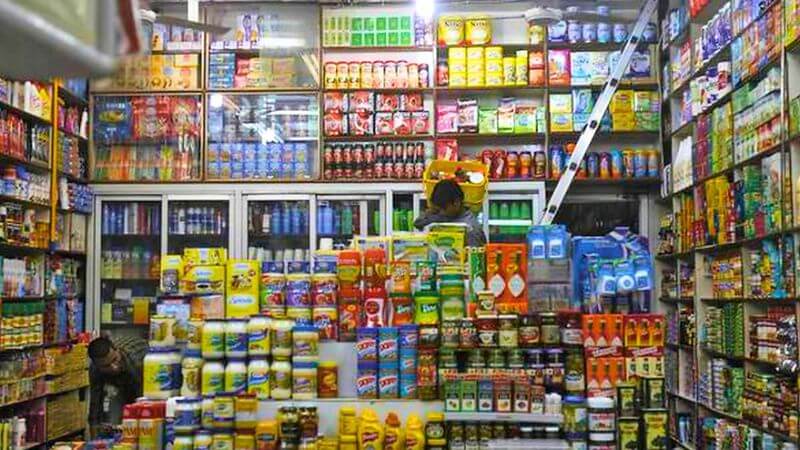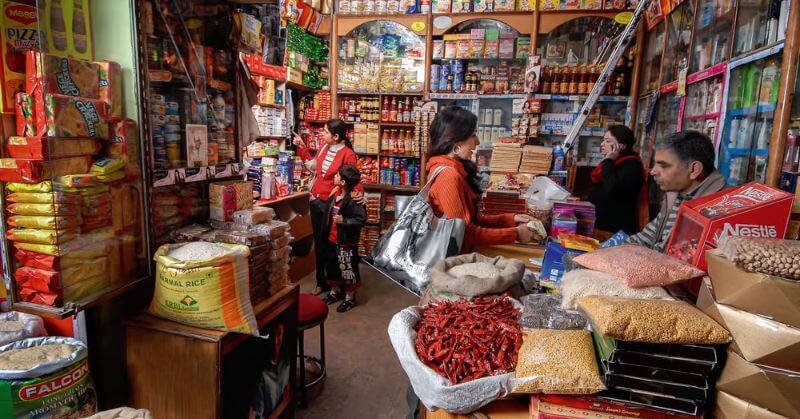India’s quick commerce market is reshaping how people shop for groceries and essentials. Valued at $6.1 billion in 2024, it’s projected to grow to a whopping $40 billion by 2030, according to a recent report by Datum Intelligence. While this transformation has created exciting opportunities for consumers, it’s also presenting tough challenges for traditional Kirana stores.
What Is Quick Commerce And Why Is It Booming?

Quick commerce platforms like Blinkit, Zepto, Swiggy Instamart, and Flipkart Minutes are built on the promise of delivering groceries and essentials within 10-30 minutes. They center their campaigns on speed and convenience, which most modern shoppers want: to be accomplished quickly and with minimal effort.
The report reveals that 46% of consumers have reduced their purchases from Kirana stores due to quick e-commerce. Quick-commerce platforms provide a facility for instant tracking, convenient payment alternatives, and affordable pricing, which is the reason why urban and tech-savvy customers prefer these.
While quick commerce is fueled by convenience, it is changing consumer behavior. Also, a report reflected that over 75 percent of online grocery shoppers had made unplanned purchases in the past six months, with an average of Rs 400 per order. Convenience while browsing and fast delivery keep such impulse buying irresistible.
The Struggles Of Kirana Stores
For decades, Kirana stores have been the heart of Indian neighborhoods, offering personalized service and community connection. But with the rise of quick commerce, these small retailers face an uphill battle. According to the report, 82% of consumers shifted some share of grocery spend to quick commerce platforms at the cost of Kirana stores.
It contrasts with quick commerce, based on technology and scalability. On the other hand, the collection remains only the traditional method of Kirana stores. And with a lack of higher digital adoption, which makes it impossible for them to compete on either pricing or delivery speed, this puts them behind. However, Kirana stores still hold strong in areas where digital penetration is low and personal customer relationships matter more.
A $40 Billion Opportunity
Quick commerce is on track to become the fastest-growing retail segment in India. It’s expected to grow by 74% in 2024 alone and achieve a 48% compound annual growth rate (CAGR) between 2023 and 2028. In this regard, by 2030, they will likely capture 21% of total Kirana sales, taking out the obvious growth in their dominance in the retail market.
What drives these companies’ success? It is no longer just groceries. Quick commerce firms now sell everything from electronics to clothes, medicine, pet supplies, and sporting goods. As such, it becomes a supermarket for fast-paced urban families.
Can Kirana Stores Adapt And Survive?
Despite the challenges, there’s hope for Kirana stores. Many small retailers are starting to partner with quick commerce platforms to leverage their hyper-local reach. To be more relevant, Kirana stores can integrate technology and offer hybrid shopping models for in-store and online orders.
What distinguishes Kiranas in the competitive environment is their various features: credit provision for clients, personalized service, and community bonding. These factors make it harder for large platforms to emulate. Another way government programs for digitizing small businesses can help is by making the modernization of Kirana more viable.
What Does The Future Hold?
With quick commerce, the way people shop has experienced a massive shift. These platforms provide consumers with convenience, speed, and variety, giving them all the comfort that companies can offer. Companies would have to answer critical issues revolving around sustainability, the welfare of delivery workers, and the environmental impact of fast deliveries as the quick commerce market grows.
Kirana store’s future is an adaptation on its own. The Kirana stores could adapt by embracing digital tools, building partnerships, and staying focused on their strengths, which shall help them continue surviving and thriving against quick commerce platforms.
What’s Next For Quick Commerce And Kirana Stores
The quick commerce market in India is creating waves and offering convenience and speed to consumers that were never seen before. But it poses a challenge to Kirana stores. They do have an opportunity to evolve and coexist with these modern platforms. And thus, when the market truly grows, the ones who put together the best of tradition and technology will win.
Follow Us: Facebook | Instagram | X |
Youtube | Pinterest | Google News |
Entertales is on YouTube; click here to subscribe for the latest videos and updates.













